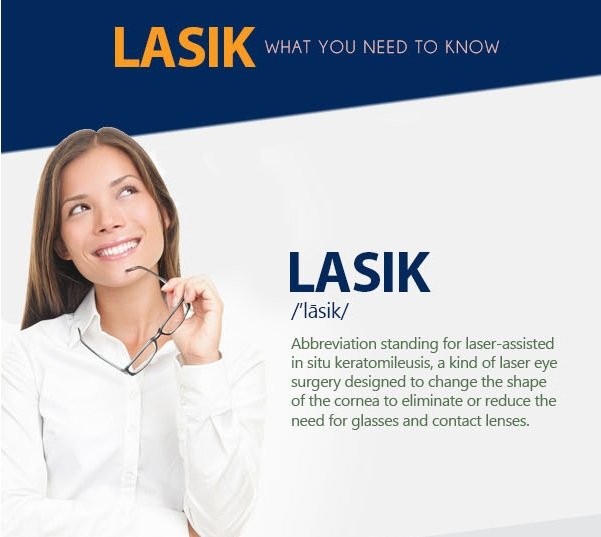Interested Regarding The Differences Between SMILE, LASIK, And PRK Eye Surgeries?
Interested Regarding The Differences Between SMILE, LASIK, And PRK Eye Surgeries?
Blog Article
Material Create By-Ryberg Wilder
If you have actually been considering SMILE eye surgical procedure, you may wonder exactly how it stacks up against LASIK and PRK. Each procedure has its very own set of benefits and considerations. From source website to potential risks, there are essential differences you must know before making a decision. Recognizing these distinctions will certainly help you make an enlightened choice that aligns with your certain needs and expectations. Interested to know even more regarding how these procedures contrast thoroughly? Keep on exploring to acquire a detailed understanding of SMILE, LASIK, and PRK.
SMILE Eye Surgical Treatment Introduction
If you're taking into consideration SMILE eye surgery, you'll discover it to be a minimally intrusive treatment with a fast recovery time. During SMILE (Tiny Cut Lenticule Extraction), a laser is made use of to produce a little, precise cut in the cornea to get rid of a tiny item of cells, improving it to correct your vision. This varies from LASIK, where a flap is created, and PRK, where the external layer of the cornea is completely gotten rid of.
One of the key advantages of SMILE is its minimally invasive nature, leading to a faster healing process and much less discomfort post-surgery. The healing time for SMILE is relatively quick, with lots of patients experiencing improved vision within a day or 2. This makes it a popular choice for those looking for a practical and efficient vision adjustment procedure. Additionally, SMILE has been shown to have a lower risk of dry eye syndrome compared to LASIK, making it a beneficial option for people worried regarding this possible side effect.
Distinctions Between SMILE, LASIK, and PRK
When comparing SMILE, LASIK, and PRK eye surgical treatments, it is necessary to comprehend the distinctive strategies used in each procedure for vision adjustment.
SMILE (Tiny Laceration Lenticule Removal) is a minimally invasive treatment that includes creating a little incision to draw out a lenticule from the cornea, improving it to correct vision.
LASIK (Laser-Assisted In Situ Keratomileusis) includes creating a thin flap on the cornea, using a laser to reshape the underlying cells, and afterwards rearranging the flap.
No Cut LASIK (Photorefractive Keratectomy) gets rid of the outer layer of the cornea before reshaping the cells with a laser.
The primary difference depends on the way the cornea is accessed and dealt with. SMILE is flapless, making it a great option for people with thin corneas or those involved in contact sporting activities. LASIK supplies fast visual recuperation as a result of the flap creation, however it may pose a higher risk of flap-related difficulties. PRK, although having a much longer healing duration, stays clear of flap-related issues completely.
Recognizing these variations is vital in selecting one of the most appropriate treatment for your vision adjustment demands.
Pros and Cons Contrast
To evaluate the benefits and disadvantages of SMILE, LASIK, and PRK eye surgical treatments, it's essential to consider the particular benefits and prospective limitations of each treatment. SMILE surgical treatment supplies the benefit of a minimally intrusive treatment, with a smaller laceration and possibly quicker healing time contrasted to LASIK and PRK. It likewise lowers the risk of dry eye post-surgery, a common adverse effects of LASIK. Nonetheless, SMILE may have constraints in treating higher levels of myopia or astigmatism compared to LASIK.
LASIK surgery provides quick aesthetic recovery and minimal discomfort during the treatment. Prices For Laser Eye Surgery 's highly efficient in treating a wide variety of refractive mistakes, including nearsightedness, hyperopia, and astigmatism. Yet, LASIK lugs a threat of flap issues, which can impact the corneal framework.
PRK eye surgical treatment, while not as preferred as LASIK, prevents producing a corneal flap, lowering the risk of flap-related problems. It appropriates for patients with slim corneas or irregular corneal surfaces. Nevertheless, PRK has a much longer healing time and might entail extra discomfort during the recovery process.
Conclusion
So, when it pertains to choosing in between SMILE, LASIK, and PRK, think of it like selecting the excellent pair of shoes. SMILE resembles a smooth, comfortable pair of sneakers - fast and easy.
LASIK is extra like stylish high heels - showy and quickly, but with some possible risks.
PRK resembles strong treking boots - trustworthy and resilient, however calling for a little bit more time and effort.
Eventually, the best option relies on your specific requirements and preferences.
